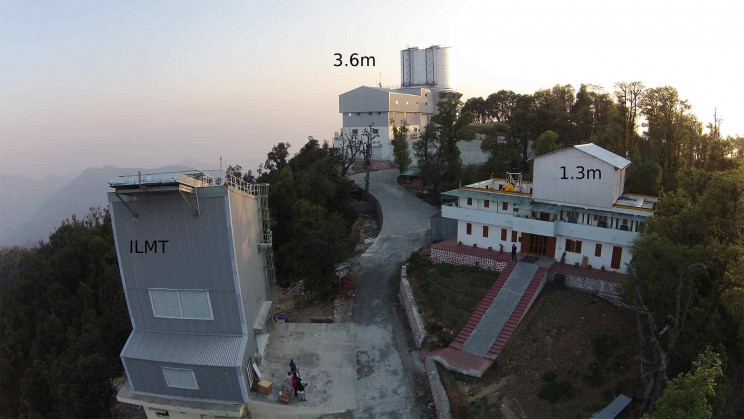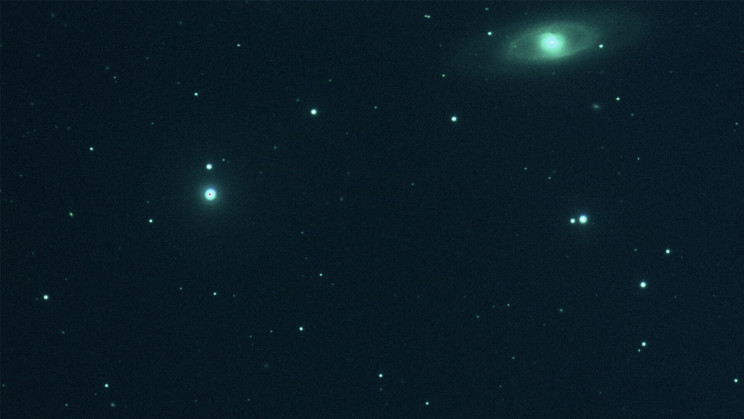The world’s first liquid telescope for astronomy is now in India. How does it differ?
India’s first liquid-mirror telescope, which also happens to be Asia’s largest telescope, stared into the vast expanse of sky for the first time from an altitude of 2,450 meters in the Himalayas.
Nestled comfortably on the campus of the Devasthal Observatory, Aryabhatta Research Institute of Observational Sciences (ARIES) in Nainital, Uttarakhand, the International Liquid-Mirror Telescope (ILMT) has entered the commissioning phase. ILMT will observe asteroids, supernovae explosions, space debris, and other celestial bodies.
In fact, it is the world’s first liquid-mirror telescope to be solely set up for astronomy and is also the only one of its kind to be operational anywhere in the world.
“Only a handful of liquid-mirror telescopes have been previously built but were majorly used either for tracking satellites or military purposes,” said Dr. Kuntal Misra, project investigator of ILMT at ARIES, in a press release.
ILMT is the third telescope facility to come up at Devasthal, which “is considered as one of the best sites for astronomical observations,” Professor Dipankar Banerjee, director of ARIES, told The Indian Express.
It will commence full-scale operations this October (The ILMT will remain shut for operations between June and August due to the monsoon season.) – along with the 3.6-meter Devasthal Optical Telescope (DOT), the largest telescope operating in India (of the 4-meter class) and the 1.3-meter Devasthal Fast Optical Telescope (DFOT).

How different is a liquid-mirror telescope from a conventional one?
Very.
“Unlike the conventional telescopes that can be steered to track specific stellar source objects, the ILMT will be stationary. It will carry out observations and imaging at the zenith, that is, of the overhead sky. This is a survey telescope having high potential for discovering newer objects,” Misra said.
A liquid telescope is made up of mirrors with a reflective liquid – mercury, in this case, which has a high light-reflecting capacity.
Around 13 gallons (50 liters – equal to 700 kgs) of mercury is filled into a container that will be rotated at a fixed constant speed along the vertical axis of the ILMT. This process will see the mercury spreading as a thin layer in the container forming a paraboloid-shaped reflecting surface which will now act as the mirror. The surface is ideal for collecting and focusing light.
The mercury mirror of the ILMT has a four-meter diameter with an aperture of f/2 defined by the speed of rotation.
‘Will capture the sky’s images on all nights’
A large-format electronic camera located at the focus records the images. Professor Paul Hickson (University of British Columbia, Canada), an expert on liquid mirror technology, said that “the rotation of the earth causes the images to drift across the camera, but this motion is compensated electronically by the camera. This mode of operation increases observing efficiency and makes the telescope particularly sensitive to faint and diffuse objects.”
Contrastingly, conventional telescopes have highly polished glass mirrors that are steered in a controlled fashion to focus on the targetted celestial object on specific nights. The light is then reflected to create images.
Another significant difference between the two types of telescopes is their operational time.
Conventional telescopes observe specific stellar sources for fixed hours per the study requirement and allotted time allotted by the respective telescope time allotment committee. Whereas ILMT will capture the sky’s images on all nights — between two successive twilights — for the next five years starting October 2022, according to The Indian Express.

Gigantic volumes of data will be produced
According to Dr. Brajesh Kumar, ILMT Project Scientist and trained expert in handling liquid-mirror telescope operations, ILMT will produce about 10 GB of data at night, which will be quickly analyzed to reveal variables and transient stellar sources.
Data will be generated in massive volumes, with ILMT set for operations every night for nine months for the next five months.
“The ILMT data will be ideally suited to perform deep photometric and astrometric variability surveys over a period of five years,” Professor Jean Surdej, project director, University of Liège, Belgium, said.
The 3.6 meter DOT, with the availability of sophisticated back-end instruments, will allow rapid follow-up observations of the newly-detected transient sources with the adjacent ILMT.
Prof. Banerjee is excited about the application of Big Data and Artificial Intelligence/Machine Learning (AI/ML) algorithms to be implemented for classifying the objects observed with the ILMT. He stated, “I am hopeful that this project will attract and motivate several young minds from scientific and engineering backgrounds to take up challenging problems.”
Who are involved?
India, Belgium, Canada, Poland, and Uzbekistan are the leading countries that have collaborated to set up the ILMT. The telescope was designed and built at the Advanced Mechanical and Optical Systems Corporation and the Centre Spatial de Liège in Belgium.
The funding, estimated to range between Rs 30 to Rs 40 crore, was jointly provided by Canada and Belgium. India will do the operations and upkeep of this telescope.
Along with ARIES, the other international institutes involved in the development process include the Institute of Astrophysics and Geophysics, Liège University, Belgium; the Canadian Astronomical Institutes from Vancouver, University of British Columbia; University of Montreal, University of Toronto, University of Victoria, York University, Laval University, Poznan Observatory, Poland; Ulugh Beg Astronomical Institute of Uzbek Academy of Sciences and the National University of Uzbekistan.
Read More: The world’s first liquid telescope for astronomy is now in India. How does it differ?

